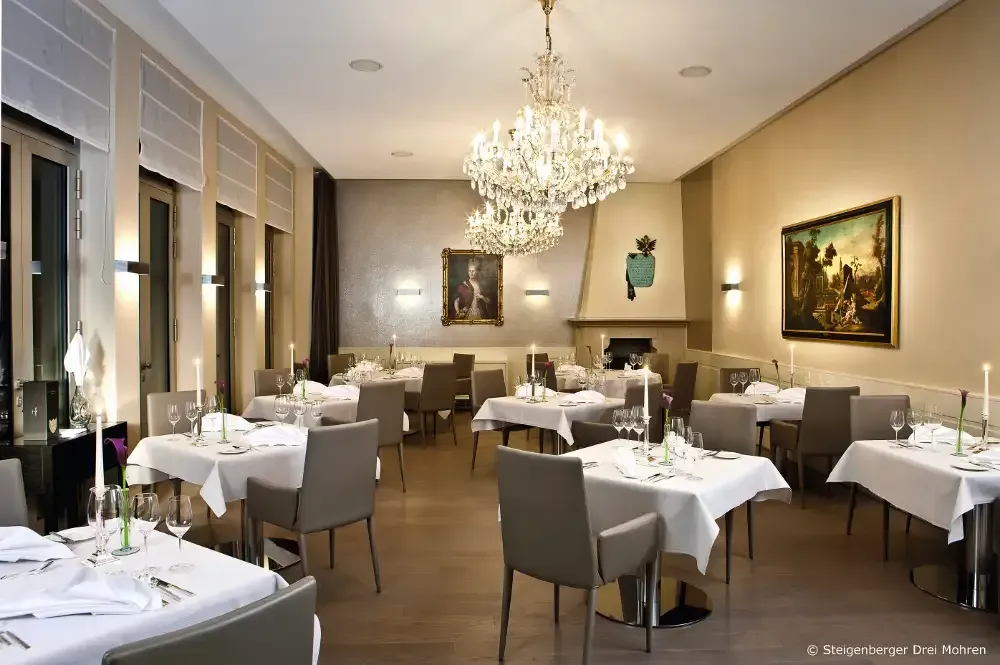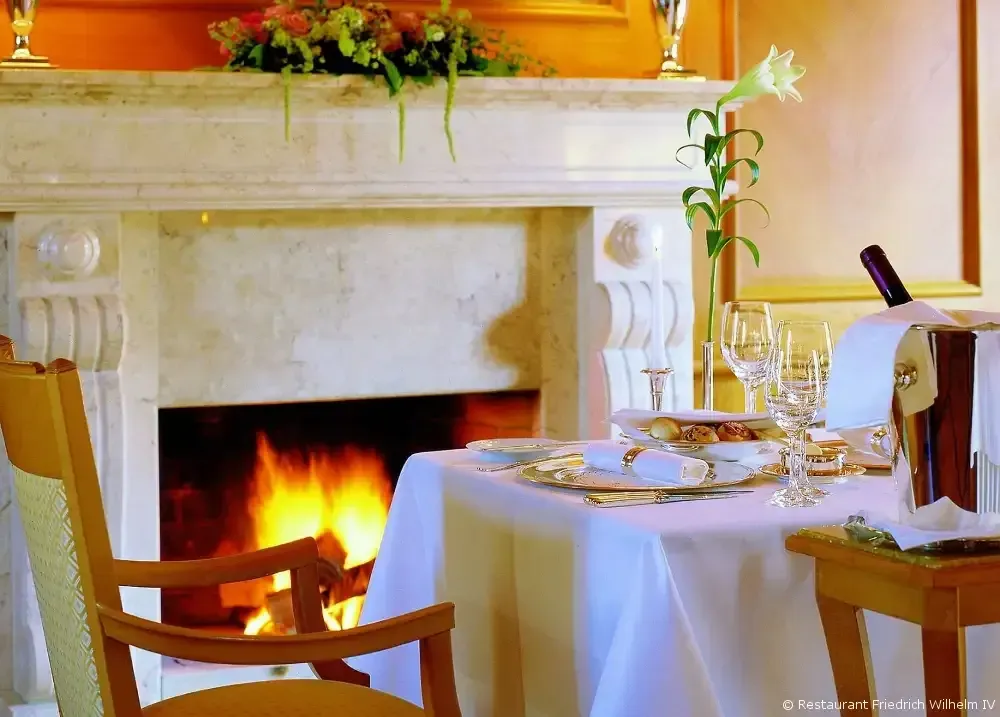14 Off-the-Beaten-Path Places You Have to Visit in Germany

These destinations take you off the typical tourist path with practical tips on where to stay, what to eat, and how to make the most of your visit.
These destinations take you off the typical tourist path with practical tips on where to stay, what to eat, and how to make the most of your visit.
-
Augsburg
-
Erfurt
-
Freiburg
-
Heidelberg
-
Koblenz
-
Mainz
-
Muenster
-
Osnabrueck
-
Potsdam
-
Regensburg
-
Rostock
-
Trier
-
Wiesbaden
-
Wuerzburg
Germany’s major cities are a natural starting point for travelers, thanks to direct flights from the U.S. But if you limit your trip to the urban hubs, you’ll miss a different side of the country—one that offers a deeper connection to local culture, regional cuisine, and a slower pace of travel. These 14 destinations take you off the typical tourist path with practical tips on where to stay, what to eat, and how to make the most of your visit.

About a 30-minute train ride northwest of Munich, you’ll find Augsburg, a 2,000-year-old city with Roman roots. Today, renaissance monuments and fountains remain as testaments to the city’s glorious history.
Stay: While the central location of Hotel Maximilian’s can’t be beaten, it’s the hotel’s day spa that makes it worth booking. Come for an authentic German wellness experience in the saunas and steam rooms.
Eat: Sartory, the Michelin-starred restaurant in Maximilian’s, is named after the chef who pioneered Swabian-Bavarian cooking. The restaurant is known for its creative twist on regional dishes, such as Zwiebelrostbraten, a roast beef dish with roasted onions.

Located almost halfway between Frankfurt and Berlin, Erfurt is the capital city of the state of Thuringia, where Martin Luther lived and studied. Its squares and alleyways are dotted with medieval architecture that will have you snapping photo after photo.
Eat: If you’re lucky, you may spot owner Alexander Kuehn making chocolate in the kitchen at Goldhelm Schokoladenmanufaktur. While you’re here, pick up a Bruecken Trueffel, the ideal sidekick to a glass of red wine.
Must-see: The Krämerbrücke, or Merchants’ Bridge, has the longest series of inhabited buildings on any bridge in Europe. Think Ponte Vecchio with a German twist. Initially built in wood, the bridge was rebuilt in stone in 1325 with 32 buildings remaining. The best view is from the tower of the Church of St. Aegidius.

On the western edge of the Black Forest, Freiburg is at the center of the Baden region’s wine-growing area. Statistically, it’s the warmest and sunniest spot in all of Germany. Given this advantage, you’ll find an abundance of fresh, locally-grown fruits and vegetables, along with wine and baked goods, at the farmers market, held Monday through Saturday under the shadow of the Freiburg Minster.
Stay: At the family-run, 5-star Hotel Colombi, the owners take great care to ensure each guest feels like the hotel is a home away from home. Its indoor pool, sauna, steam bath, and solarium combine for the ultimate relaxing getaway, though hiking trails and the old town are just beyond the front doors.
Eat: Since 1982, Colombi Restaurant Zirbelstube has maintained its Michelin-star status, revealing the consistency behind the restaurant’s seasonal dishes. The pine-paneled restaurant adds warmth to the space while evoking a traditional German dining room.

Mark Twain, as evidenced in “A Tramp Abroad”, was a big fan of Heidelberg, home to Germany’s oldest university. Today, students still give the city a youthful energy, while the riverside setting and hilltop castle add to the romanticism of this storied city.
Stay: The 5-star Heidelberg Suites overlooks the Neckar River with arguably the best views of the Old Town and castle. The boutique hotel is just steps from the Alte Brücke, or Old Bridge, which connects visitors to the historic Altstadt, where one will find an abundance of cafes and restaurants. Borrow one of the hotel’s basket-clad bicycles to experience the city like a local.
Eat: Try the classic German dish schnitzel at the Schnitzelbank, a former cooper’s workshop turned wine seller/restaurant.

Koblenz sits right where the Rhine and the Moselle rivers meet. Seemingly impossibly vertical vineyards, rocky cliffs, and forested hillsides provide the scenery for which the romantic Rhine Valley is renowned.
Must-see: Take a cable car ride across the Rhine River, soaking up the views along the way, before exploring Fortress Ehrenbreitstein, part of the Upper Middle Rhine Valley UNESCO World Heritage site.
Eat: Make dinner reservations at the restaurant on the hillside at Fortress Ehrenbreitstein for unbeatable panoramas.

Located across the Rhine River from Wiesbaden, Mainz is a university town known for being home to the Gutenberg press. It’s also the perfect spot to try the region’s wines; Rheinhessen is the largest of the country’s 13 wine regions.
Stay: The family-run Favorite Parkhotel may become your favorite hotel. Abutting city parkland, the hotel has plenty of green spaces for unwinding, including the hotel’s own Biergarten.
Eat: Favorite’s restaurant boasts a Michelin star along with a dining room overlooking the Rhine and the city of Mainz.

Called the country’s cycling capital, Münster has nearly 300 miles of bike path, making it easy to explore the old town, surrounding parkland, castles, and unique works by international artists throughout the city’s urban spaces.
Stay: Factory Hotel, a member of Design Hotels, is an eclectic mix of old buildings and new designs. The property transformed the former Germania Brewery into a vibrant destination for travelers and locals alike. Abutting a lake, the property is surrounded by shops, restaurants, and clubs.
Eat: Gaststätte Pinkus Müller is a family brewery that’s been serving delicious food and homebrewed beer since 1816.

Less than an hour from Muenster, Osnabrueck has a beautiful old-walled Hanseatic city. This splendid old quarter is full of boutique shops, galleries, and restaurants. It’s also home to the Felix Nussbaum Museum. Designed by renowned American architect Daniel Libeskind (architect of Berlin’s Jewish Museum and the new World Trade Center in New York City), it presents the life and works of locally-born Jewish artist Felix Nussbaum, who was murdered during the Holocaust.
Stay: The more than 300-year-old Hotel Walhalla is a half-timbered building in the Baroque style. Throughout its history, the hotel has welcomed numerous prominent guests from all over the world, including the Dalai Lama.
Eat: Dine on seasonal local food at Wilde Triebe, a restaurant located in a refurbished former railway building that dates back over 150 years.

Potsdam is around a half-hour drive or train ride from Berlin, making it accessible no matter how you arrive. A UNESCO World Heritage site, the more than dozen area palaces, most notably Sanssouci, and parks in the area line the River Havel and numerous interconnected lakes. Think of this as Berlin’s version of Versailles.
Stay: The views from the lakefront rooms at Inselhotel Potsdam are unbeatable, especially if you upgrade to a terrace room. Be sure to book a hot stone massage at the hotel’s spa.
Eat: Restaurant Dreimäderlhaus serves authentic German food in a cozy atmosphere, with live piano music many nights.

Just over 60 miles from both Munich and Nuremberg, Regensburg sits on the Danube River. Its wealth of ancient medieval buildings earned its Old Town UNESCO World Heritage list distinction. And because it was largely spared during World War II, it’s the largest medieval city in the entire country.
Stay: Tired of cookie-cutter hotels? Stay at Hotel Goliath Am Dom Regensburg, where each of the 41 rooms is decorated with unique wallpaper, furniture, and art. You can even note your favorite color when booking and be assigned to a room accordingly.
Eat: Restaurant Storstad is a great destination for carnivores and vegetarians alike—head chef Josef Weig offers a choice of a vegetarian or conventional set menu.

Located on Germany’s northeast coast, Rostock, a former Hanseatic city that celebrated its 800th anniversary in 2018, is off the typical tourist path. But for in-the-know Europeans, it’s an idyllic seaside getaway. Warnemuende, the coastal portion of town, hosts a large beach, lighthouse, and fisherman’s port.
Stay: Yachthafenresidenz Hohe Dune, a 5-star luxury hotel, sits directly on the Baltic Sea, adding an extra maritime flair to its rooms. The resort has a private marina with direct sea access, and its location in Hohe Dune makes it a quiet escape.
Eat: At the Michelin-star restaurant Der Butt, you can’t get much closer to being on the water without getting your feet wet.

Further west along the Moselle River from Koblenz, nearing the Luxembourg border, Trier is home to some of the finest Roman relics north of the Alps. Formerly known as Augusta Treverorum, the city stood as the capital of the Western Roman Empire. Today, the city still features innumerable structures left by the Romans that make it worth a visit.
Stay: Becker’s Hotel is positioned among vineyards in Trier, showcasing its winemaking heritage that goes back five generations. Its sleek design fits with the more ancient vibe of the city thanks to the use of natural materials, including wood, basalt, and volcanic rock.
Eat: Sample the wines you see being produced outside your window at the hotel’s on-site eatery, Becker’s Restaurant.

Just across the Rhine River from Mainz on the edge of wine country, Wiesbaden is a city of grand hotels, luxury villas, tree-lined avenues, and spacious parks. With its well-preserved 19th-century architecture, cafes, and ambiance, you’ll immediately understand why this city is special. It’s also one of Europe’s oldest spa towns, with 26 thermal springs bubbling up around the city.
Russian novelist Fyodor Dostoevsky allegedly gambled at Wiesbaden’s tables in the 1800s, and today, you can still try your luck at the Kurhaus and Casino Wiesbaden.
Stay: Stay close to the action at Hotel Nassauer Hof, a five-star hotel located across the street from Kurhaus.
Eat: Weather permitting, Benner’s has a terrace overlooking the well-manicured park that abuts the Kurhaus.

Located on the Main River, Wuerzburg is known for its wine. It’s the capital of the Franconia wine region, renowned for its dry white wines, and vineyards crawl up the steep hillsides. You’ll find world-famous wines here alongside smaller, equally palatable, family-produced wines.
Stay: Housed in a beautifully restored old castle, Schlosshotel Steinburg has panoramic views over the river and valley below.
Eat: Sample the oldest white wine in the world at the Bürgerspital Wine Estate, and then pair it with innovative dishes at the Bürgerspital Weinstuben Restaurant.

